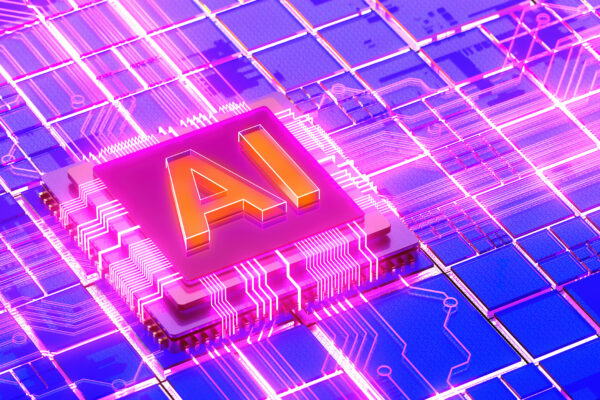Automation is an essential element in the dynamic field of software development and testing, as it helps achieve uniformity and efficiency. Selenium, an open-source web browser automation tool, has greatly enhanced the testing process for many developers and testers. However, adding artificial intelligence (AI) can improve Selenium’s performance even more. This blog examines how to use technologies like OpenCV, TensorFlow or PyTorch, Google Cloud Vision API, Microsoft Azure Cognitive Services, and IBM Watson APIs to augment Selenium with AI functions, including image recognition, natural language processing (NLP), and machine learning methods.
-
OpenCV for Image Processing and Computer Vision Tasks
OpenCV (Open-Source Computer Vision Library) is an open-source computer vision and machine learning library. It provides a wide range of tools for image and video processing, making it an ideal choice for enhancing Selenium’s visual validation capabilities.
Benefits and Use Cases:
Visual Validation: OpenCV can be used to capture and compare screenshots during Selenium tests, ensuring that the UI remains consistent.
Element Detection: In cases where traditional locators fail due to dynamic content, OpenCV can identify elements based on visual features.
By integrating OpenCV, Selenium tests can become more robust in handling visual elements, which is particularly useful for applications with rich graphical interfaces.
-
TensorFlow or PyTorch for Machine Learning Tasks
TensorFlow and PyTorch are the most popular frameworks for developing machine learning models. They provide powerful tools for creating and deploying neural networks and other machine learning algorithms.
Benefits and Use Cases:
Predictive Analysis: Utilize machine learning models to predict potential issues in web applications based on historical data.
Advanced Element Identification: Enhance Selenium’s element locators using deep learning models to identify elements based on patterns learned from training data.
Integrating TensorFlow or PyTorch with Selenium can help in creating more intelligent tests that can adapt to changes and predict failures before they occur.
-
Google Cloud Vision API for Image Analysis
Google Cloud Vision API offers advanced image analysis capabilities, including object detection, text recognition (OCR), and content understanding. This API can be seamlessly integrated with Selenium to enhance its image analysis capabilities.
Benefits and Use Cases:
Text Recognition: Use OCR to read text from images captured during tests, which is particularly useful for validating CAPTCHA or other image-based content.
Object Detection: Ensure the presence of specific objects or elements within a web page by analyzing screenshots.
With Google Cloud Vision API, Selenium tests can handle complex image analysis tasks, making them more versatile and effective.
-
Microsoft Azure Cognitive Services for Various AI Functionalities
Microsoft Azure Cognitive Services provides a broad range of AI services, including vision, speech, language, and decision-making APIs. These services can be integrated with Selenium to leverage various AI functionalities.
Benefits and Use Cases:
Language Understanding: Enhance chatbots or other text-based interactions on web pages using Azure’s NLP capabilities.
Image Analysis: Like Google Cloud Vision, Azure’s Computer Vision API is used for OCR and object detection.
By incorporating Microsoft Azure Cognitive Services, Selenium can be extended to perform advanced language and image processing tasks, thereby improving test coverage and accuracy.
-
IBM Watson APIs for Natural Language Processing and Other AI Tasks
IBM Watson offers a suite of AI services, including powerful NLP capabilities and machine learning models. These APIs can significantly augment Selenium’s testing capabilities.
Benefits and Use Cases:
Sentiment Analysis: Analyze user feedback or reviews on web pages to gauge sentiment, providing insights into user satisfaction.
Chatbot Testing: Enhance automated testing of chatbots by integrating Watson’s NLP services to understand and interact with natural language inputs.
Integrating IBM Watson APIs with Selenium can provide advanced NLP and machine learning functionalities, making automated tests more insightful and responsive to user interactions.
Conclusion
Integrating AI capabilities with Selenium can transform it into a more powerful and versatile tool. Whether using OpenCV for image processing, TensorFlow or PyTorch for machine learning, Google Cloud Vision API for image analysis, Microsoft Azure Cognitive Services for various AI functionalities, or IBM Watson APIs for NLP, the potential improvements are vast. These integrations can lead to more intelligent, robust, and efficient automation frameworks, enabling developers and testers to handle more complex scenarios and achieve higher levels of automation.
By leveraging these AI tools, Selenium tests can become more resilient, adaptable, and insightful, ultimately leading to better software quality and faster release cycles. As AI continues to evolve, the possibilities for enhancing Selenium with these technologies will only expand, offering even more innovative solutions for automated testing.

